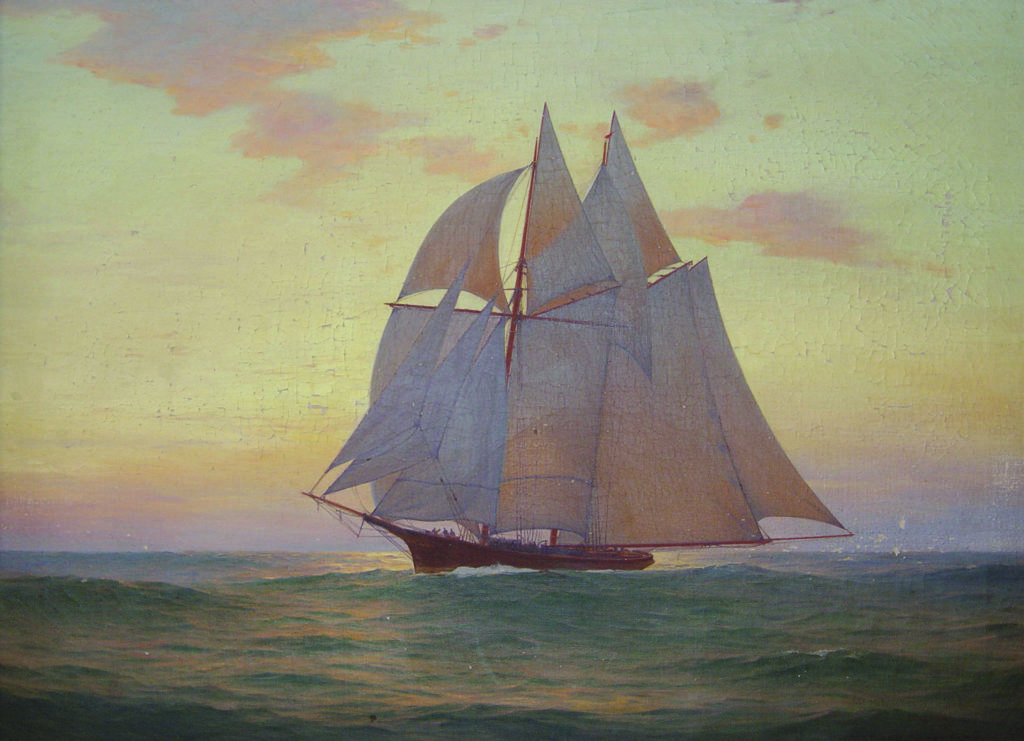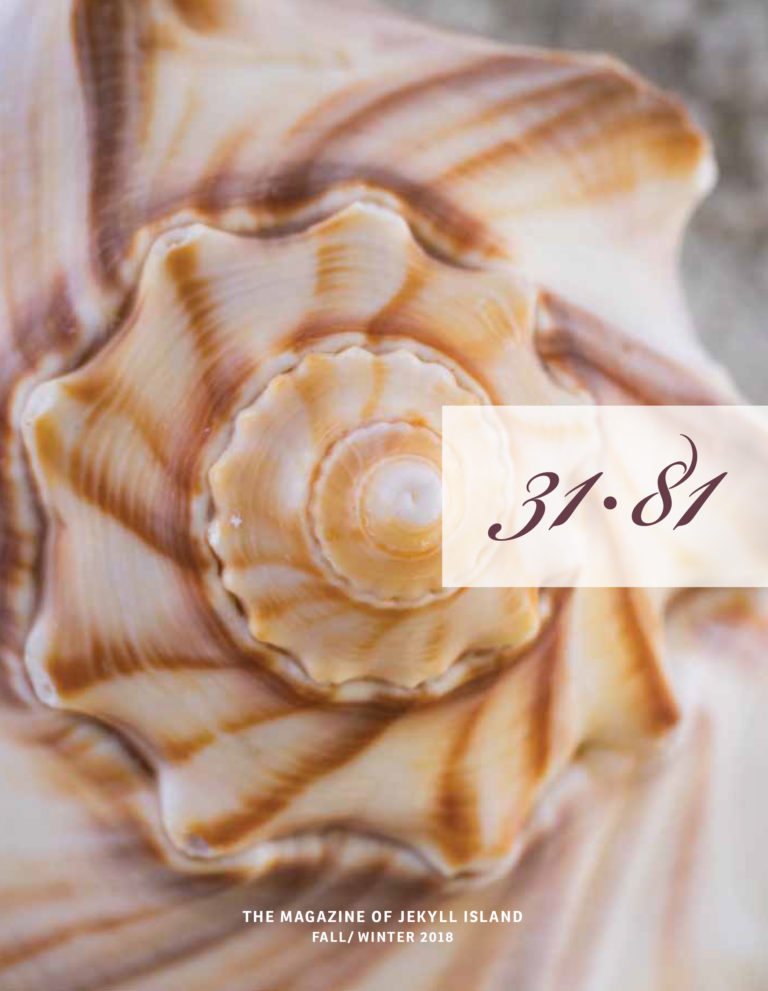By Rosalind Bentley
Let the water and the blood
From Thy riven side which flowed,
Be of sin the double cure,
Save from wrath and make me pure.
—from the spiritual “Rock of Ages”
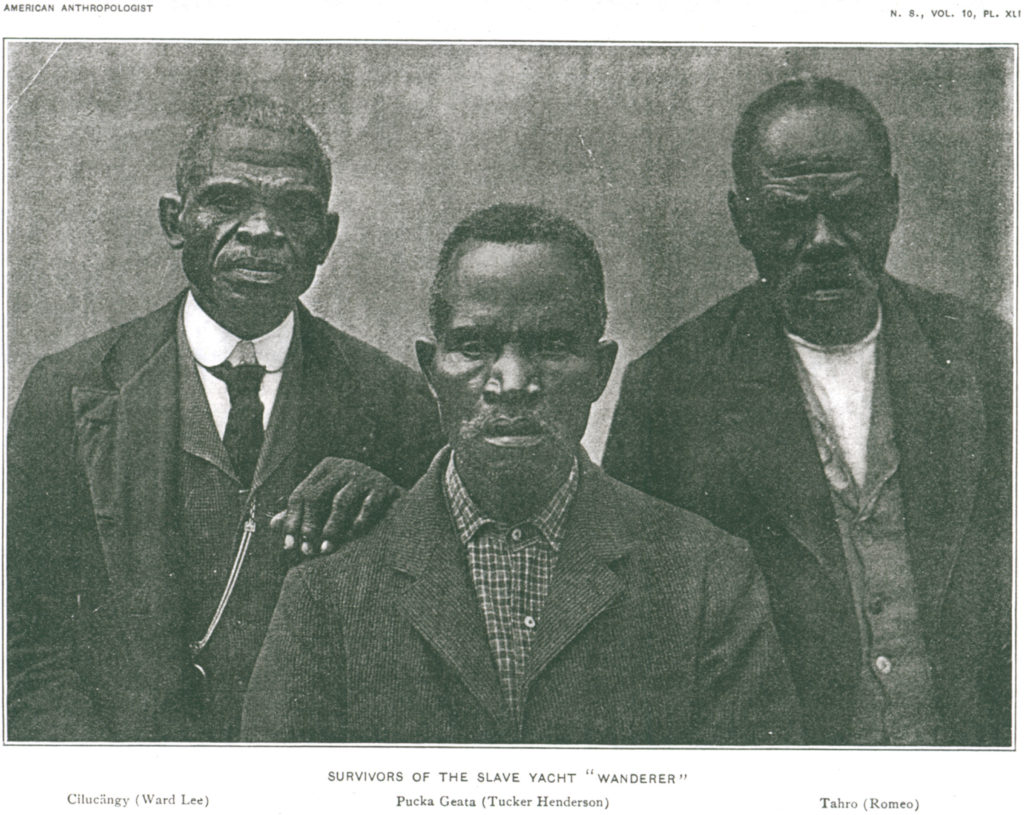
On November 28, 1858, more than 400 enslaved Africans arrived on the shores of Jekyll Island, leaving behind one deadly journey and beginning another. This is the story of Georgia’s last slave ship and its enduring legacy.
For as long as Michael Higgins could remember, the old hickory walking cane stood sentinel at his grandmother’s house in Aiken, South Carolina. Sometimes, when his grandmother would touch it, she’d tell Higgins about her grandfather, Ward Lee, the man who carved it: he’d cradled the curved handle in his hand as he walked for so many years that the wood was burnished from the caress of his palm.
Lee’s skin was dark as molasses. He was a skilled artisan who took pride in his creativity. But above all, Lee believed in the importance of family and having a place of your own. “She said he always talked about how we had to keep the family together,” Higgins said.
What Higgins’ grandmother never told him was the reason Lee wanted so desperately to keep his descendants close.
Lee knew what it was to be ripped away from his family when he was a boy. He knew the ache of young muscles that could not be stretched out because they were chained in place. He knew the stench of nearly 500 bodies, including his own, packed like spoons in a cramped, stifling ship hold for six weeks. He knew the chill of ocean water against raw skin in November as he, still a child, trudged barefoot and naked onto the south shore of Jekyll Island with about 400 other Africans. Lee, whose real name was Cilucängy, and the other captives had been part of one of the most notorious chapters of American history, one that left a lasting mark on Jekyll Island and the nation.
Lee and the others had been the human cargo on the Wanderer, the last ship to bring enslaved Africans to Georgia. It was also one of the last such ships to drop anchor on American shores before the Emancipation Proclamation in 1863—but long after the United States Congress outlawed the importation of enslaved Africans in 1807.
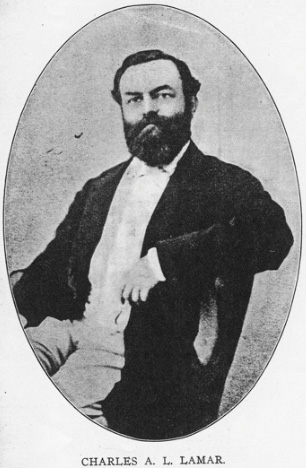
The story of how Lee and the other Africans came to Jekyll on November 28, 1858, is a journey that began in the minds of some of the South’s most vocal proponents of slavery, including Charles Lamar, one of Savannah’s most influential businessmen.
Lamar associated with a band of pro-slavery advocates, which author Erik Calonius dubbed “the fire eaters” in his book The Wanderer: The Last American Slave Ship and the Conspiracy That Set Its Sails. These were Southern men of high station who hated the idea of the North dictating anything to the South, especially regarding the institution of slavery. Slavery had long existed in the North, but it drove the Southern economy. Lamar and his group believed the South had every right to expand its economic power by importing more Africans directly from their home continent. The domestic supply of enslaved African Americans was not growing fast enough to support growth, they reasoned. And importing Africans was profitable, given that brokerage houses that supported the slave trade flourished up and down the East Coast.
In Tom Henderson Wells’ book The Slave Ship Wanderer, Lamar’s voice on the matter was clear: “‘What is the difference between going to Africa and Virginia for negroes. And, if there is a difference, is not that difference in favor of going to Africa?’”
So, from 1857 through early 1858, Lamar twice tried and failed to smuggle Africans to Georgia’s shore. But later in 1858, he had a hit. He partnered with William Corrie and others who had ownership stakes in a yacht called the Wanderer. The yacht, originally built as a pleasure boat, was commissioned by its first owner as the ultimate example of elegance and luxury. Built in New York, with brass fittings, gleaming exotic woods, and bespoke details all the way down to the leather-bound volumes in its library, the Wanderer was the talk of the town. It was every bit as fast as it was stately. It was faster than just about any vessel in the New York Yacht Club.
After purchasing it, Corrie had a secret deck added to the yacht and a 15,000-gallon freshwater tank installed—necessary additions for the gruesome task ahead.
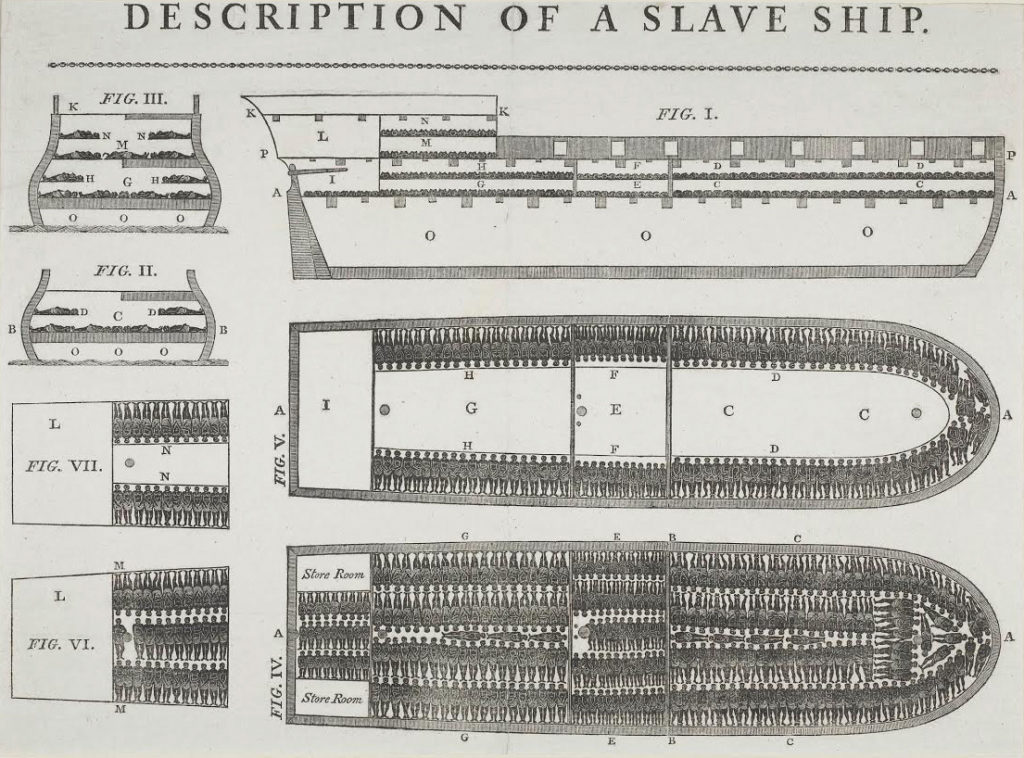
There were whispers that the Wanderer was being turned into a slave ship, but time after time, from the harbors of New York to the mouth of the Congo River in Africa, Corrie and his crew eluded authorities who were on the lookout for yachts and ships suspected of being part of the illegal slave trade.
In October 1858, the Wanderer made its way down the Congo, where an elaborate network of traders had set up barracoons to house captives meant for sale: men, women, boys, and girls. Some had been captured in raids by rival tribes. Some had been tricked into bondage. They hailed from points across the sub-Saharan portion of the continent. “They enticed kids with sweets and trinkets, and some were snatched out of their mother’s arms,” said researcher April Hynes, who has an upcoming book on the Wanderer saga.
Lee, who then was called by his real name, Cilucängy, and 486 other Africans were loaded onto the ship. Misery awaited them. “They set the 487 as if they were spoons in the available space, allowing twelve inches of width, eighteen inches in height, and less than five feet in length per person,” Calonius wrote.
Food was a mush of cowpeas or corn. They had to relieve themselves where they lay, for there was no privy for captives. Sickness was rampant. During the six-week journey, some eighty of the Africans died. As they expired their bodies were thrown overboard.
Arrangements had been made with the DuBignon family, which owned Jekyll at the time, for the captives to be brought first to the island and from there smuggled out for sale across the South. But within days of the Wanderer’s landing, word spread of the piracy and the cache of Africans. Many had distinctive markings and tattoos that easily set them apart from African Americans who’d lived here for generations. Within weeks, many of the Wanderer’s number were sold across the South from Florida to Texas. Some—like Lee—were sold to families in Aiken and Edgefield County, South Carolina. Some remained on Jekyll and became property of the DuBignons.
The federal government swiftly brought charges against Lamar, Corrie, and their crew for their roles in the Wanderer episode. There were three trials in Savannah that made headlines all the way to New York. This was something of a test: would the South be punished for breaking an anti-slavery law? Ultimately, Lamar, Corrie, and the others beat virtually every charge and moved on with their lives as free men. But men such as Ward Lee remained in bondage.
Within three years of that clandestine arrival of the Wanderer on Jekyll, the South and the North went to war. The Wanderer by then had been seized and turned into a Union warship. And within five years of their journey, Lee and the others who’d been enslaved were declared free. But what was freedom if you couldn’t return home?
Years later, perhaps around the time Lee carved that hickory walking stick, he wrote a public letter. It began with the words, “Please help me.” Lee, who remembered what it was to be a boy named Cilucängy, wanted to return to Africa before he died. He asked for donations to help him return. “I am bound for my old home if God be with me,” he wrote.
He never made it.
A copy of that letter is now part of a permanent multimedia exhibition about the Wanderer in St. Andrews Beach Park on the southern end of Jekyll, where Lee touched ground 160 years ago. His great-great-grandson, Michael Higgins, is now fifty-five years old. Higgins has visited Jekyll with other relatives to pay homage to their ancestor. But it is Lee’s walking cane that sticks in Higgins’ mind.
When he was in elementary school, Higgins was cast as an old man looking back on his life. The day of the play, his grandmother handed him the hickory cane. Higgins walked onto the stage propped up by the legacy of Cilucängy.
Higgins, who now lives in New York, didn’t learn about the Wanderer until he was in college. He doesn’t know where the cane is now, but he knows the story of how his family came to be in this land. Thinking of what Cilucängy went through and who he became, Higgins said, gives him strength to endure.
Conspiracy at Sea
1857
John Johnson commissions the building of the luxury pleasure yacht the Wanderer. He pays $25,000 for its construction.
1858
The Wanderer is sold to William Corrie of Charleston for a reported $30,000. To transport the enslaved Africans, Corrie and others had the yacht retrofitted with a hidden deck. A 15,000-gallon freshwater tank was also installed.
June 18, 1858
The Wanderer leaves New York bound for Charleston on the first leg of its illegal voyage to Africa.
Sept. 16, 1858
The Wanderer arrives at the mouth of the Congo River.
Oct. 18, 1858
The Wanderer departs Africa bearing its human cargo.
Nov. 28, 1858
The ship lands on the southern end of Jekyll Island.
Dec. 18, 1858
A hearing is held in Savannah for Corrie and his crew in federal court.
April 15, 1859
Charles Lamar is indicted in the Wanderer conspiracy. A week later, John Couper and Henry DuBignon are indicted.
May 28, 1860
Prosecutors file a nolle prosequi order, effectively ending the case against Lamar and others.
Jan. 21, 1871
After service as a Union Army vessel and a subsequent change of ownership after the Civil War, the Wanderer sinks off the coast of Cuba.
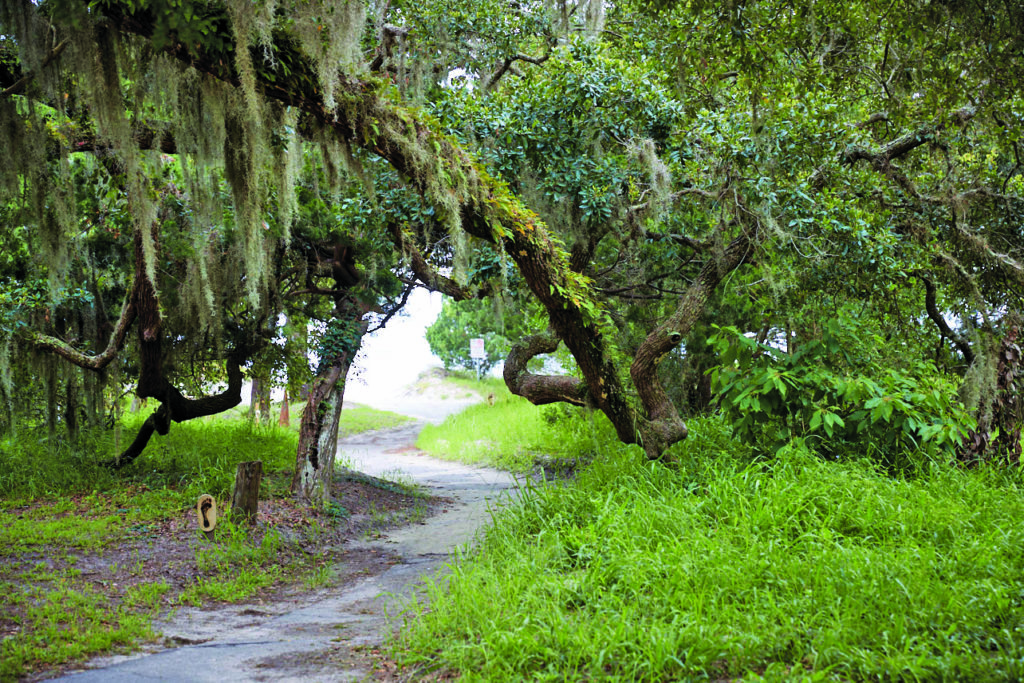
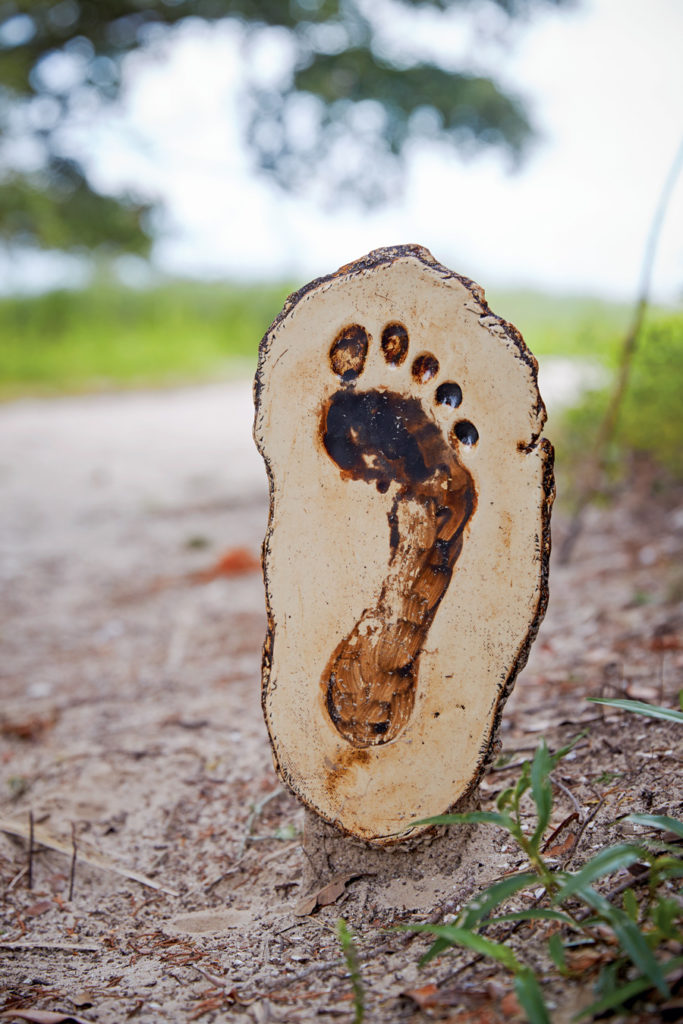
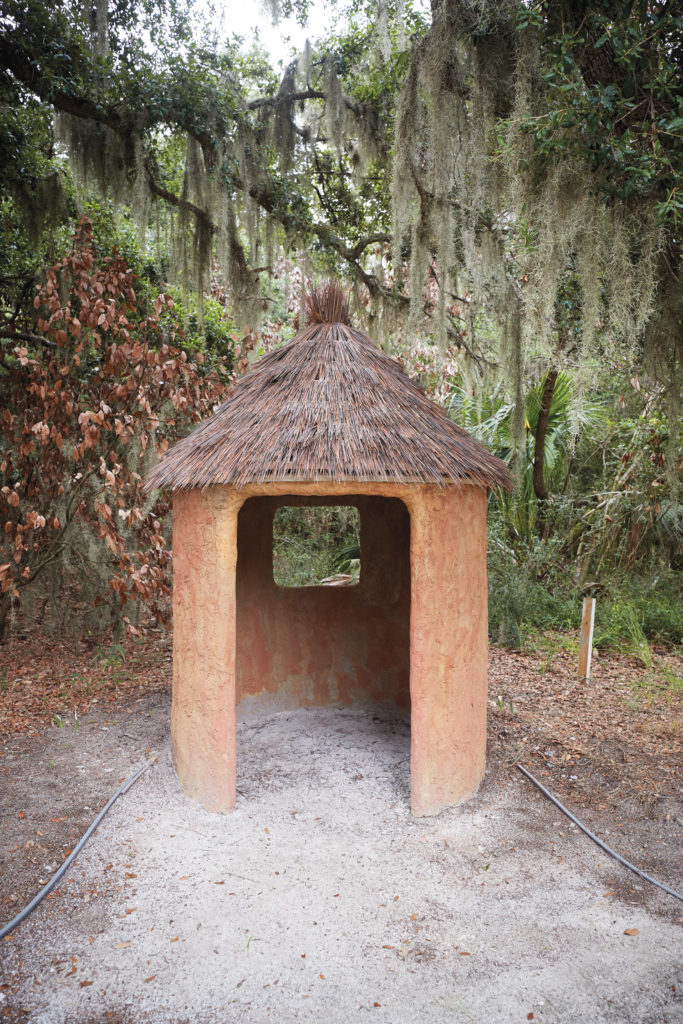
Dive Deeper
The story of the Wanderer, the last ship to bring enslaved Africans to Georgia, is part of Jekyll’s history. Here’s where to learn more about it.
The Wanderer Memory Trail at St. Andrews Beach Park
100 St. Andrews Circle
At this permanent multimedia installation, you’ll find panels that tell the story of the Wanderer and replicas of African dwellings and work spaces.
Mosaic, Jekyll Island Museum
100 Stable Road
Visitors can learn more about the ship and its survivors through a visit to Mosaic, Jekyll Island Museum. One significant artifact the exhibit includes is a cooking pot said to have been on the yacht during the middle passage.
Horton House/DuBignon Cemetery
North Riverview Drive
John Couper DuBignon was part of the conspiracy to bring the Africans to Jekyll. His tabby house, which was built by Major William Horton in 1743, was where the Wanderer’s owner and crew sought aid after landing. Members of the DuBignon family are buried in the nearby cemetery.
Recommended Reading
The Wanderer: The Last American Slave Ship and the Conspiracy That Set Its Sails, by Erik Calonius
The Slave Ship Wanderer, by Tom Henderson Wells
